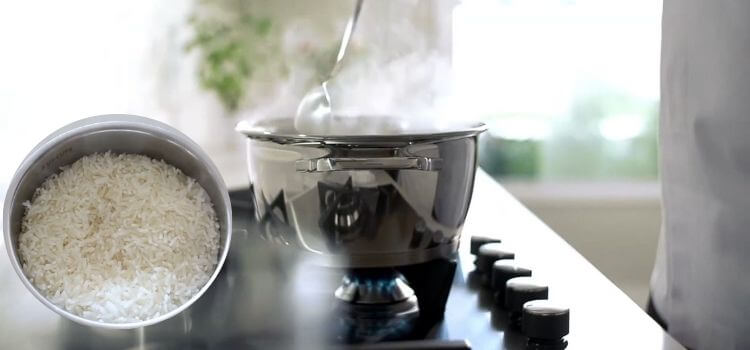
Rice is a key food for people all around the world, providing essential nutrition and being a part of countless traditional dishes. It’s a staple that millions depend on daily. In many kitchens, stainless steel cookware is becoming more popular because it’s durable, safe, and easy to clean.
However, many people wonder if it’s the right choice for cooking rice. Can stainless steel pots deliver the perfect, fluffy rice we all love, or are there challenges that come with using this material? In this article, we’ll explore whether stainless steel pots are suitable for cooking rice and share some tips to get the best results.
What is Stainless Steel Cookware?
Stainless steel cookware is a strong and durable material used in many kitchens worldwide. It’s called “stainless” because it resists rust and corrosion, even when exposed to water and air.
Made from a blend of metals like iron, chromium, and sometimes nickel, stainless steel’s chromium content prevents it from reacting with food. This means it won’t change the taste or react with acidic foods like tomatoes or vinegar.
One major advantage of stainless steel cookware is its longevity. It doesn’t chip, crack, or warp easily. Unlike non-stick pans, which lose their coating over time, stainless steel remains intact and is safe for high-heat cooking.
While cast iron is durable, it requires regular seasoning and can be heavy. Stainless steel is lighter and easier to maintain.
Why Consider Cooking Rice in a Stainless Steel Pot?

Cooking rice in stainless steel offers several key benefits. Stainless steel is a healthier choice because it has no chemical coatings that can wear off and mix with your food. This keeps the natural flavors of your ingredients intact.
It’s also versatile. Stainless steel pots aren’t just for rice—they can be used for boiling, steaming, sautéing, and frying. This makes it easy to use one pot for multiple dishes, saving time and effort on cleanup.
Another benefit is durability. Stainless steel doesn’t warp or scratch easily, even with regular use. A good-quality pot can last for years, maintaining both its performance and appearance.
The Science of Cooking Rice: What You Need to Know
Cooking rice isn’t just about boiling water and adding rice. The absorption method is key to making fluffy rice. In this process, rice absorbs the water as it cooks. To do this successfully, you need even heat distribution.
Stainless steel pots are great for this because they spread heat evenly, which helps cook rice uniformly. If the heat is uneven, some rice grains might cook too fast or too slow, leading to an uneven texture.
A well-fitting lid is also important. It traps steam, helping the rice cook evenly without drying out. This allows the rice to absorb the water and cook perfectly.
However, there are challenges. If the heat is too high or the pot has too little water, rice can stick or burn. Stainless steel doesn’t have a non-stick surface, so it’s important to stir the rice and monitor the heat to avoid these issues. Also, uneven cooking can happen if the pot isn’t placed properly on the burner or the lid doesn’t seal correctly.
How To Cook Rice In Stainless Steel Pot: Step-by-Step Guide
Cooking rice in a stainless steel pot is easy when you follow these simple steps:
Step 1: Choose the Right Type of Rice and Measure Accurately
First, decide which type of rice you want to cook—options like basmati, jasmine, long-grain, or brown rice are all good choices. Measure the desired amount, remembering that rice typically doubles in size during cooking.
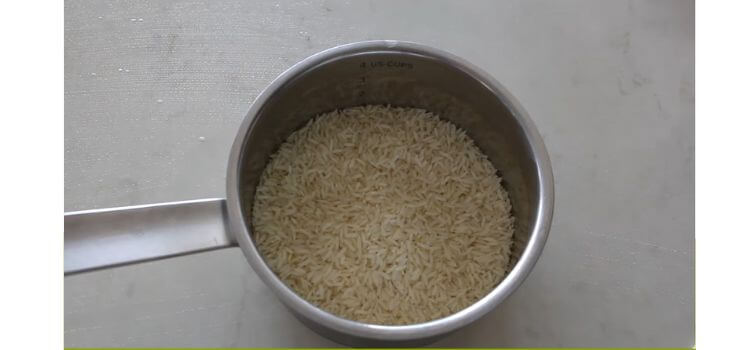
Step 2: Rinse the Rice Thoroughly to Remove Excess Starch
Place the measured rice in a bowl or directly in the pot, then rinse it under cold water. Use your hand to swirl the rice around, then drain the water. Repeat this rinsing process two or three times until the water runs clear, which helps remove excess starch that can cause the rice to become sticky.

Step 3: Measure and Add the Appropriate Water-to-Rice Ratio
For most types of rice, the typical ratio is 2 cups of water for every 1 cup of rice. This ratio can vary depending on the type of rice, so it’s important to check the package instructions. Add the measured water to the pot containing the rinsed rice.
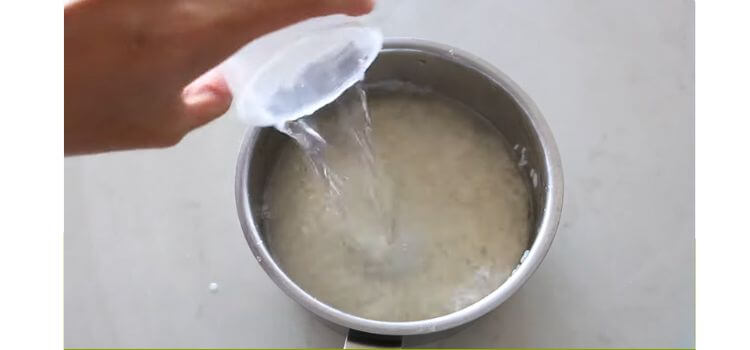
Step 4: Use Medium Heat to Bring to a Boil, Then Lower to a Simmer
Set the pot on the stove and adjust the heat to medium. Let the water gradually reach a gentle boil. Once it starts boiling, reduce the heat to low, letting the rice simmer gently. This slow cooking method is crucial to prevent the rice from burning or sticking to the bottom of the pot.
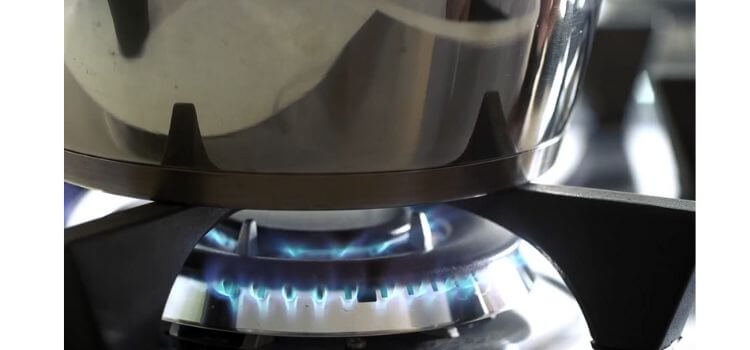
Step 5: Cover the Pot and Cook Without Lifting the Lid
Cover the pot with a tightly fitting lid to keep the steam inside. Let the rice cook for the recommended time—typically 15-20 minutes for white rice and 40-45 minutes for brown rice. Avoid lifting the lid during this time, as it can release steam and interfere with the cooking process.

Step 6: Let the Rice Rest Before Fluffing with a Fork
Once the cooking time is up, turn off the heat and let the rice sit, covered, for about 5 minutes. This resting period allows the steam to finish cooking the rice and makes it easier to fluff. Finally, remove the lid and use a fork to gently fluff the rice, separating the grains for a light and fluffy texture.
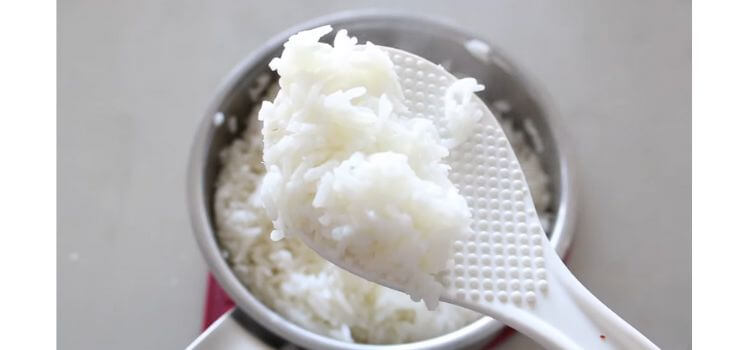
Tips and Tricks for Perfect Rice in Stainless Steel Pots
- Add a little oil or butter to keep the rice from sticking.
- Use low heat to stop the rice from burning at the bottom.
- You can use a special tool called a heat diffuser to spread the heat evenly.
- If needed, stir the rice once while cooking, but don’t stir it too often.
Common Issues and How to Overcome Them
When cooking rice in a stainless steel pot, you might encounter a few common issues, but with the right techniques, they can be easily overcome. One frequent problem is rice sticking to the bottom of the pot. To prevent this, it’s helpful to use a non-stick spray or add a small amount of oil before you start cooking. This creates a barrier between the rice and the pot, reducing the chances of sticking.
Another issue you might face is uneven cooking or burning. This often happens when the heat is too high or if the pot doesn’t distribute heat evenly. To avoid this, make sure to lower the heat to a gentle simmer and use a pot with a heavy bottom. A heavy-bottomed pot spreads the heat more evenly, helping the rice cook uniformly without burning.
If you do end up with burnt rice stuck to the pot, cleaning it can be a challenge. The best approach is to soak the pot in warm water for a while, which will help loosen the burnt bits. After soaking, gently scrub the pot with a soft sponge or non-abrasive scrubber to avoid scratching the surface. This method should make it easier to clean the pot without damaging it.
The Best Types of Rice to Cook in Stainless Steel Pots
When it comes to cooking rice in stainless steel pots, choosing the right type of rice is essential for achieving the best results. Different varieties of rice require different cooking times and water ratios, and stainless steel pots can handle them all effectively.
Basmati rice is a long-grain variety known for its fragrant aroma and fluffy texture. When cooking basmati in a stainless steel pot, use a water-to-rice ratio of 1.5:1 (1.5 cups of water for every cup of rice). Basmati rice usually cooks in approximately 15 to 20 minutes. The even heat distribution of a stainless steel pot ensures that the grains remain separate and don’t become mushy.
Jasmine rice is another popular choice, especially for its slightly sticky texture and delicate fragrance. For jasmine rice, a water-to-rice ratio of 1.25:1 works well, with a cooking time of around 15 minutes. Stainless steel pots are excellent for jasmine rice because they can handle the slightly sticky nature of the rice without it clumping together excessively.
Brown rice is a whole grain rice that takes longer to cook and requires more water than white rice. The ideal ratio for brown rice is 2:1 (2 cups of water for every cup of rice), and it needs about 40-45 minutes to cook. Stainless steel pots are particularly beneficial for cooking brown rice because their durability allows for the longer cooking time without risk of warping, and the even heat helps cook the tougher grains thoroughly.
Frequently Asked Questions (FAQs)
Can I cook rice on any type of stove with a stainless steel pot?
Yes, you can cook rice on any type of stove using a stainless steel pot. Whether you have a gas, electric, or induction stove, stainless steel pots are versatile and work well on all of them. Just be sure to adjust the heat accordingly to avoid burning the rice, especially on high-powered stoves.
How do I prevent rice from sticking without using too much oil?
To prevent rice from sticking without using too much oil, start by thoroughly rinsing the rice to remove excess starch, which is often the cause of sticking. You can also add a small amount of oil or butter—just a teaspoon is usually enough. Additionally, cooking the rice on low to medium heat and using a well-fitting lid to trap steam will help keep the rice from sticking to the pot.
What is the best way to clean a stainless steel pot after cooking rice?
After cooking rice, if there’s any residue stuck to the bottom of the pot, the best way to clean it is to soak the pot in warm water for a while. This will help loosen the stuck-on rice. Then, use a non-abrasive scrubber or a soft sponge to gently clean the pot, avoiding harsh scrubbing that could scratch the stainless steel surface.
Can I use a stainless steel pot in an oven or only on the stovetop?
Stainless steel pots are highly versatile and can be used both on the stovetop and in the oven. However, make sure that the pot is oven-safe, particularly the handles and lid. Most stainless steel pots can handle high oven temperatures, making them great for dishes that require cooking on the stovetop and finishing in the oven.
Conclusion
Cooking rice in stainless steel pots offers numerous benefits, from the material’s durability and even heat distribution to its non-reactive nature, which preserves the natural flavors of your food. With the right techniques, stainless steel can be an excellent choice for cooking rice, whether you’re making basmati, jasmine, broollwn rice, or any other variety. By rinsing the rice, using the correct water-to-rice ratio, and contring the heat, you can achieve perfectly cooked rice every time without sticking or burning.
I encourage you to experiment with your stainless steel pots and try cooking different types of rice. With a little practice, you’ll find that stainless steel is not only versatile but also a reliable and essential tool in your kitchen for preparing delicious, fluffy rice. So go ahead, grab your stainless steel pot, and start cooking.
Related Topic
Is Copper Cookware Safe? A Comprehensive Guide
Is Gotham Steel Cookware Safe? Uncovering the Truth About Cancer Risks
Is Teflon Safe for Cooking? Understanding the Risks and Exploring Alternatives
Uncovering the Risks: What Are the Dangers of Calphalon Cookware?